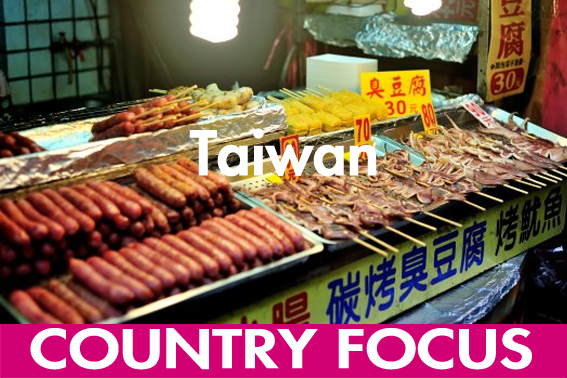Taiwan’s challenging future in pig farming

Less than 20 years ago, Taiwan was one of the great success stories in the world of pork production and exports. Nowadays, however, the country faces ?challenges and is going through a phase of transition.
Taiwan (formally known as the Republic of China) is about the same size as Belgium and has a population of about 24 million. Its main island is about 100 miles from the east coast of China, separated by the Taiwan Strait, and is a short flight from Hong Kong. Two characteristics of Taiwan stand out in the statistics – the population is an ageing one and is relatively rich. The number of people over 65 is expected to account for 20% of the island’s total population by 2025 and the nation runs a large trade surplus.
Its foreign reserves are the world’s fifth largest (behind those of China, Japan, Saudi Arabia, and Switzerland) and its average GDP/capita (in purchasing power parity terms) is above the EU average.
Moving away from the top
However, whilst Taiwan may be deemed to be an economic success, its place in the global pig industry is to remind us all of how easy it is to move from near the top of the pile to a position well down the ‘pork premier league’. In 1996 Taiwan was one of the world’s largest exporters of pork, but its production and exports collapsed with the outbreak of Foot-and-Mouth Disease (FMD) in 1997/98.
Indeed, with a little help from the Classical Swine Fever (CSF) outbreak in the Netherlands in the same year, this retreat by Taiwan’s exporters played its part in the boom and bust price cycle that swept across the globe in 1997/98. As exports and production dried up from these two big players, prices rose to record highs, inducing a huge supply response and then the price collapse in 1998/99. If that’s its place in history – what is Taiwan’s future in the world’s pig industry? The short answer is – challenging.
Feed supplies
The challenge starts with feed supplies – Taiwan relies on imports for about 90% of its animal feed and, obviously, Taiwan’s pig sector is vulnerable to the vagaries of the global feed market.
Further, official estimates put Taiwan’s cost of production at 1.7 to 1.8 times higher than the major western pork-exporting countries, since feed conversion and sow productivity numbers are significantly poorer than for the world’s big exporters. Another vulnerability is the incidence and control of animal disease – Taiwan has been unable to achieve FMD-free status since 1997 and its efforts in that direction have not been helped by several causes:
- poor biosecurity;
- the way the country has used FMD vaccines;
- the smuggling of live pigs from the mainland; and
- the commonplace practice of collecting food waste from households for use in feeding pigs.
There are of course official policies to address all these issues. Meanwhile, Taiwan is an attractive market for pork exporters. Traditionally, Taiwan has been very keen on increasing its self-sufficiency in food, but its entry into the WTO in 2002 and the aforementioned vulnerabilities have reduced its room to manoeuvre on this policy objective for pork production.
Government policy
Government policy for pig production has recognised these various challenges and encouraged modernisation and, particularly, the reduction of wastewater and pollution and the use of waste in renewable energy schemes such as biogas/electricity production. The Environmental Protection Administration in Taiwan has been very active in encouraging ‘clean pig farming and renewable green energy’. The ‘three-step treatment system’ is widely used and is a source of organic fertiliser for tea and fruit farms. The industry has also been encouraged to improve its competitiveness through strategic business alliances and better marketing.
The National Animal Industry Foundation is one example of such an alliance that promotes the brand ‘Taiwan Black Pig’. Another government initiative is to bring together small farms to form ‘Agricultural Production and Marketing Groups’ that can access investment funds and secure greater bargaining power. The ageing population of Taiwan is an issue in agriculture and a policy to counter this is the ‘Small Landlords, Big Tenant Farmers’ programme, which leases land that elderly farmers are not cultivating, to young professional farmers or agricultural groups; and these tenant-farmers receive various incentives. The average age of tenant-farmers is 44 years, compared with an average age of 62 for other farmers across Taiwan.
In summary, Taiwan’s pig and pork sector has probably seen its best days – in numbers of pigs and volumes of pork. Its opportunity probably lies in showing how to get more pork from a smaller environmental footprint and, perhaps, from developing its indigenous Taiwan black pig as a branded and premium product in retail and food service outlets. Whatever happens, let’s hope that Taiwan never again makes the same impact on the global industry as it did back in 1997.
Taiwan at a glanceTaiwan counts just under 24 million people on 36,000 km2 of land; the country ranks 33rd in GDP, with an average of US$43,600. Based on the 2013 census, it’s possible to say that there are around 8,500 pig farms in Taiwan and that some 5,000 of these have 500 pigs or less in their units. The counties of Yunlin, Pingtung, Changhua, Chiayi and Kaohsiung had the highest concentrations of pigs and accounted for more than two-thirds of the pig herd. The 2013 survey reported 8.7 million pigs in the country, a breeding herd of around 600,000 sows and annual production of about 900,000 tonnes of pork. There are fewer than 60 official abattoirs in Taiwan and they have an average capacity of around 21,000 pigs slaughtered per day. |












